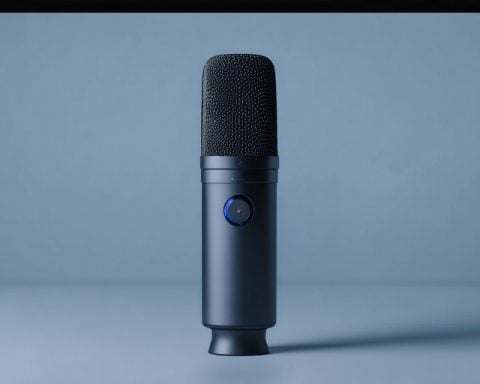- Kinetic Group inaugurates a revolutionary battery manufacturing hub in Ahmednagar, enhancing India’s EV industry.
- With a Rs. 50 crore investment, the facility can produce 60,000 high-performance battery packs annually.
- The hub supports Kinetic’s brands and supplies numerous original equipment manufacturers (OEMs).
- Manufactures Range-X batteries, optimized for two- and three-wheeled EVs, using LFP and NMC technologies.
- India’s EV market is poised to reach US$18.319 billion by 2029, with Kinetic’s eco-friendly batteries leading the charge.
- An automated IoT-augmented assembly line and stage-wise inspections ensure adherence to high safety standards.
- Aligns with the “Make in India” initiative, promoting sustainability and technological advancement in the EV sector.
Kinetic Group unveils a game-changing battery manufacturing hub in the bustling city of Ahmednagar, propelling India’s electric vehicle (EV) sector into a new era of innovation. With an ambitious vision and an investment of Rs. 50 crore, the facility boasts the capability to churn out 60,000 high-performance battery packs annually. This state-of-the-art plant not only bolsters Kinetic’s own brands but also extends its reach to a plethora of original equipment manufacturers (OEMs).
On the plains of Ahmednagar, where the vibrant pulse of industry meets cutting-edge technology, the Kinetic Group meticulously crafts its Range-X brand batteries. Built to thrive in both two- and three-wheeled EVs, these batteries encompass both the robust LFP (Lithium Iron Phosphate) and the powerhouse NMC (Nickel Manganese Cobalt) types, promising reliability and endurance even in India’s diverse climates.
As India gears up for a surging EV market, projected to skyrocket to US$18.319 billion by 2029, Kinetic’s move could not have come at a more opportune moment. The facility’s commitment to eco-friendliness is noteworthy, embracing non-toxic, recyclable materials that make them a sustainable choice for conscientious consumers.
Precision in production is underscored by an automated assembly line infused with IoT-enhanced systems and rigorous stage-wise inspections. This ensures every battery aligns with stringent safety standards.
Kinetic Group’s newest venture stands as a testament to their resolve in advancing battery technology while supporting India’s Make in India initiative. This dynamic leap not only caters to the burgeoning demand but also underscores an unwavering commitment to a sustainable and technologically advanced future. The facility isn’t just a manufacturing unit—it’s a beacon lighting the pathway to self-reliance and environmental stewardship in the EV landscape.
How Kinetic Group’s State-of-the-Art Battery Hub is Revolutionizing India’s EV Future
Introduction
Kinetic Group’s launch of their advanced battery manufacturing facility in Ahmednagar marks a significant stride in India’s EV sector. With a production capability of 60,000 high-performance battery packs annually, this facility is set to position Kinetic as a pivotal player in the EV revolution. Below, we delve into various aspects of this development, from the technology used to its implications on the market and sustainability.
How-To Steps & Life Hacks
Installing Battery Packs in EVs:
1. Safety First: Always wear protective gear such as gloves and safety glasses.
2. Turn Off Power: Ensure the electric vehicle is completely turned off.
3. Remove Old Battery (if applicable): Disconnect the negative terminal followed by the positive terminal. Remove any securing mechanisms.
4. Install New Battery: Position the new battery safely and connect the terminals – positive first, then negative.
5. Secure Battery: Use the appropriate fasteners to secure the battery in place.
Maximizing Battery Life:
– Regular Inspection: Periodically check the battery for any physical damage or irregularities.
– Controlled Temperatures: Store and operate the battery in optimal temperature ranges to prevent capacity loss.
– Avoid Full Discharge: Charge frequently rather than waiting for a low battery warning.
Real-World Use Cases
The facility will cater extensively to OEMs looking to integrate high-performance battery solutions into two and three-wheeled EVs. This aligns with the rapid rise in urban EV adoption, especially for last-mile delivery services and personal commuting.
Market Forecasts & Industry Trends
By 2029, India’s EV market is expected to soar to US$18.319 billion, driven by governmental policies supporting sustainable transport and a shift in consumer preference. The adoption of battery technologies like LFP and NMC further reflects a trend towards safer, longer-lasting power solutions in harsh climatic conditions.
Features, Specs & Pricing
Battery Types:
– LFP (Lithium Iron Phosphate): Known for safety and long life, LFP batteries are non-toxic and less prone to thermal runaway.
– NMC (Nickel Manganese Cobalt): Offers higher energy density and power capacity, suitable for performance-focused EVs.
Pricing Insight:
While specific pricing varies based on customization and volume, Kinetic Group’s scalable production promises competitive rates conducive to both individual buyers and large-scale OEM partners.
Security & Sustainability
Eco-Friendly Approach:
Kinetic emphasizes the use of non-toxic, recyclable materials, making sustainability a core operational principle. Moreover, the integration of IoT-enhanced systems forms a digital safety net for monitoring and managing output efficiency and reliability.
Insights & Predictions
Kinetic’s venture aligns with India’s Make in India initiative, predicting a boom in localized manufacturing that could decrease reliance on imports, spur economic growth, and encourage technological advancements tailored to regional needs.
Tutorials & Compatibility
For comprehensive guides and compatibility specifics, Kinetic provides access to resources that OEMs and technicians can leverage to ensure seamless integration and maintenance of these battery packs.
Pros & Cons Overview
Pros:
– High production capacity enhances availability.
– Use of LFP and NMC batteries offers versatility in application and assures safety.
– Eco-friendly packaging and manufacturing techniques support sustainability.
Cons:
– Initial setup costs can be high for OEMs.
– Adapting to rapid tech advancements requires continuous investment.
Actionable Recommendations
1. For EV Manufacturers: Embrace partnerships with Kinetic for sustainable battery solutions.
2. For Consumers: Opt for vehicles equipped with LFP or NMC batteries for safer, longer-lasting performance.
3. For Investors: Consider the EV market’s growth trajectory as a cue for lucrative investment opportunities in green technology.
To explore more about advancements in renewable energy and electric vehicles, visit Kinetic Group. For updates on India’s EV policies and trends, check Make in India.














